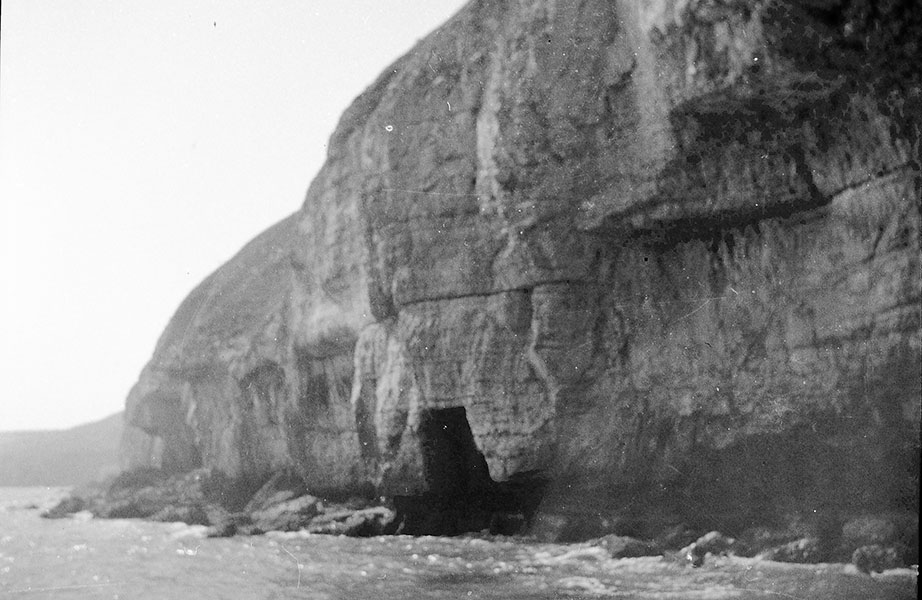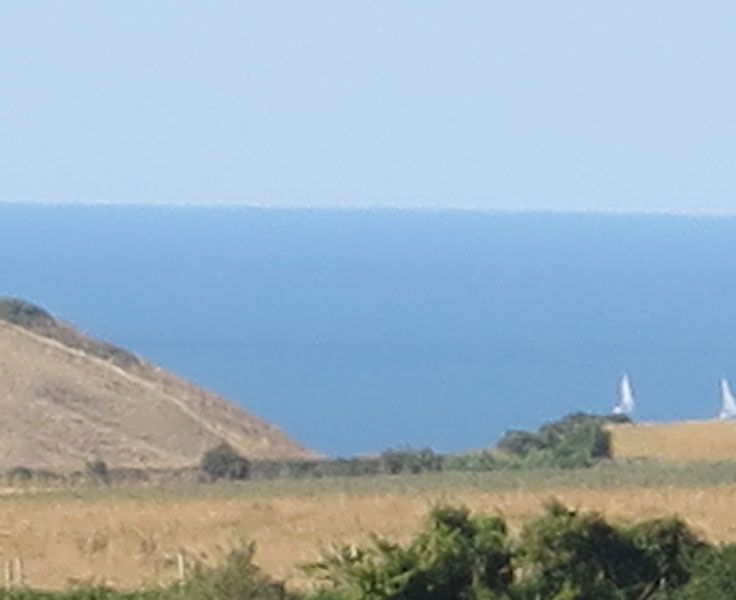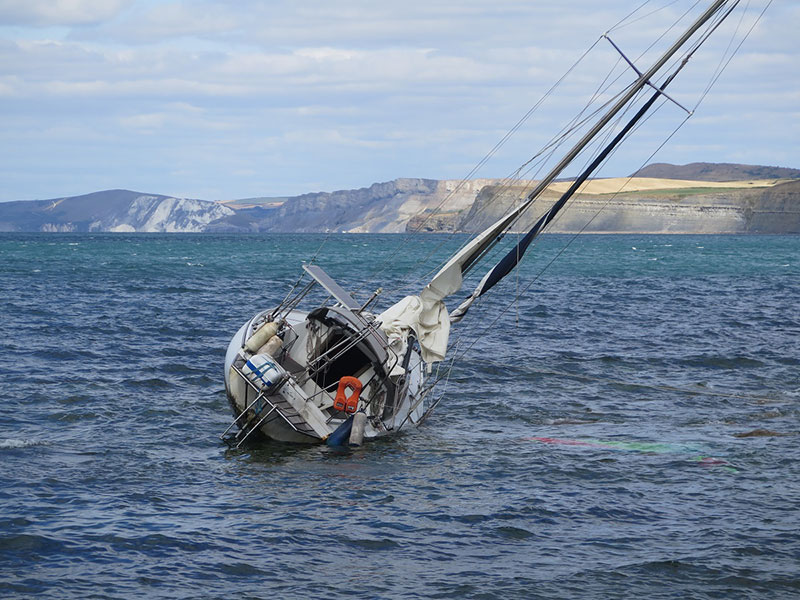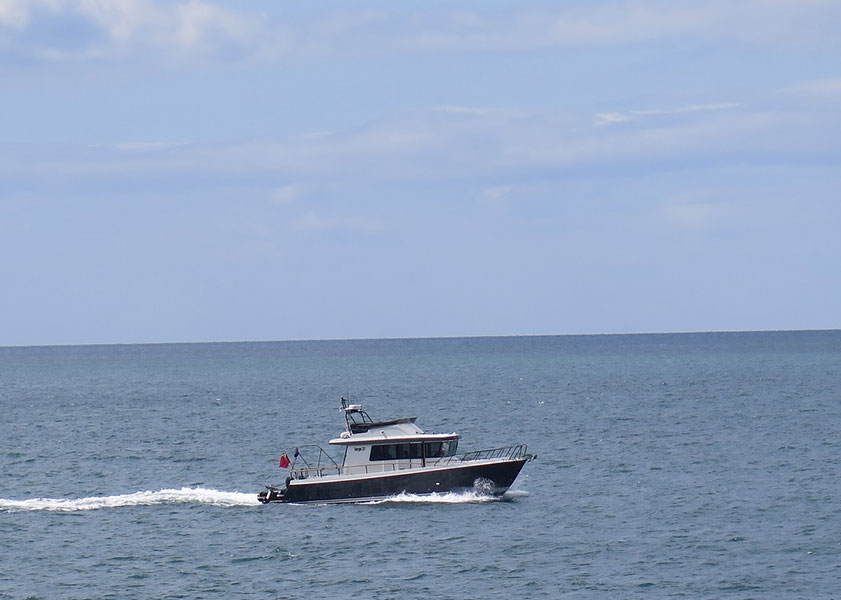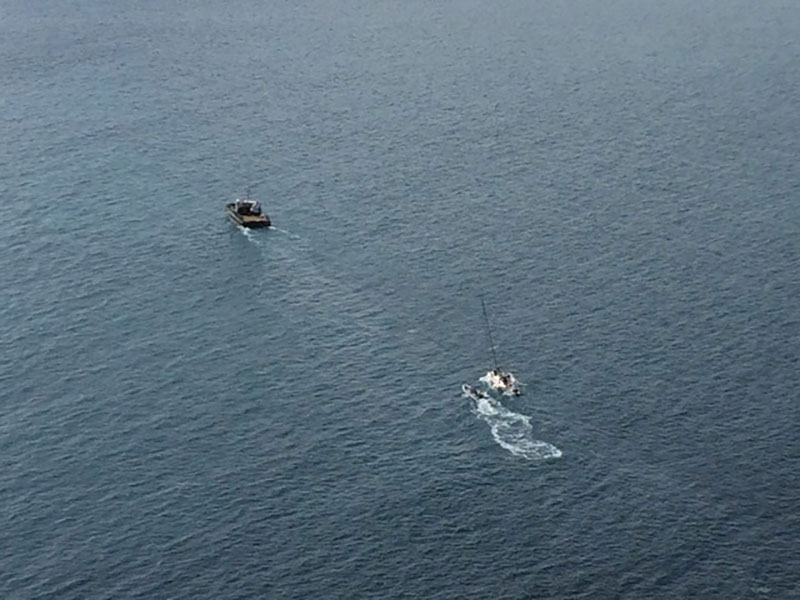101. On The Rocks
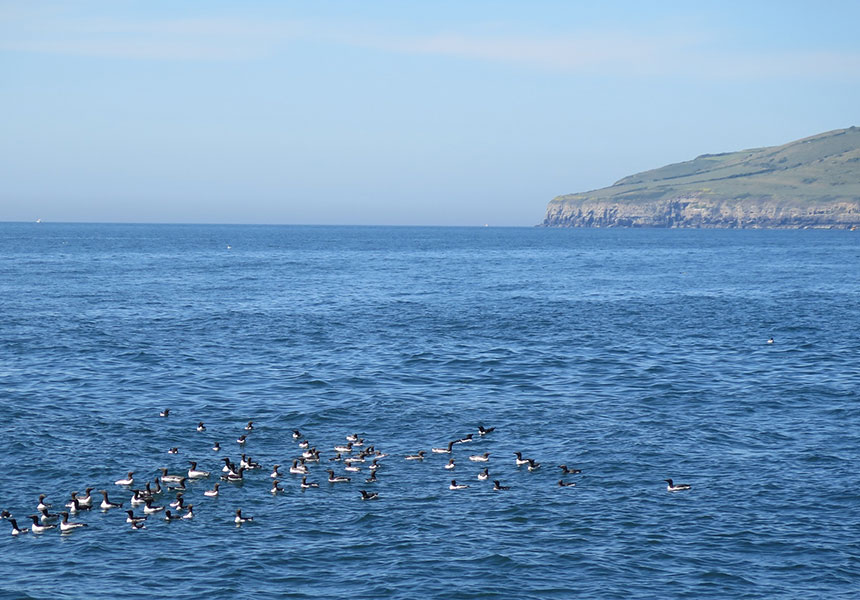
100. Blackers Hole
August 12, 2025I ndia would approve of stopping this blog on 101. It starts with a footnote for last month’s piece – I discovered a loose negative of Blackers Hole from 1957.
But to the present: oddly, August has been an interesting news month in Purbeck. On the first day, rising out of the valley, I stopped near Eastington Farm to look over the fields of St Aldhelms Head, browned by this arid summer. In India for Purbeck’s 1976 drought, Trev had sent me occasional photos of its brown hills. These are no less brown, so I took pictures out over the Head before descending to Seacombe and following the cliff path past Battery Corner, where no fulmars bred this year; little albatrosses, they have nested here for a couple of decades. Perhaps bird flu took its toll.
Towards the Head are ruins of wartime buildings involved with the station which was developing radar there. In one, where the farmer stored hay, a mate of mine and I sometimes slept out. Another, Trev and I partially demolished, passing a long, rainy day destroying its inner brick wall, which was made with a weak cement mix – wartime austerity. A memorable day! We threw bricks at one side, then shifted to the other and hurled the increased pile bricks at that opposite. Nearby, Pilot’s Path led down to the shore where, a century earlier, a pilot kept his dinghy. From the clifftop he would signal to vessels sailing up the Channel, offering to guide them past its hazards. Long overgrown, we used it to access the eastern undercliff.
My walk took the stepped descent to Pier Bottom, where I caught a brief glimpse of a yacht’s mast. It had struck the rocks and seemed abandoned. A rough path leads to the shore, where once stood a pier (see blog 34), hence the name. Boats came there to pick up stone from the long-vanished quay. The shallows are muddy, creating recent wet footprints from the yacht northwards towards Chapmans Pool. It bore no flag nor any obvious name (in fact ‘..di Lena’, writ small, was half concealed by a plastic box, probably one of a pair worth exploring). Since the crew had disappeared, the yacht was probably about naughty business: drugs most likely: there was little space for a good cargo of immigrants. The yacht itself was valuable, the sea warm, not rough, so an honest crew, even if only one man, would have tried to get it off the rocks or, in these days of easy communication, phone for help. Despite Britain’s notoriously poor network, there is a signal.
Since the wreck was very recent, I watched what would happen. A local fisherman came past, saw it, came close to look, then got on with hauling his pots. Then an official boat, the Border Force, perhaps, flying the red ensign, appeared, took a look at the yacht, went into Chapmans Pool then continued westwards. No one made any attempt to land. Assuming that the police and coastguard, informed by the Border Force, would soon come to investigate, I didn’t wade out to investigate onboard but continued to Chapmans Pool. In fact, it seems that no one had bothered to check it over.
In the evening, transferring photos to my laptop, I admired those of the desiccated Head and noticed that one showing Pier Bottom, when enlarged, revealed two similar yachts passing the wreck site two hours before I reached it. Just coincidental? Moonwise, the trip had been badly planned. It is a tricky place to land, even in my little dinghy, needing a high spring tide. That day the high tide, not an extreme one, had been around 5am.
Later, I heard that, after several days, other folk, hearing about the yacht had found cocaine still on board and informed the police. (Was it in the remaining plastic container on the stern, easily dropped overboard if the Law approached?) When I came back, a fortnight later, the nearest carpark was teeming with police and coastguards. By now, the boat was battered and overturned, the box gone from its stern. A frogman, towing a little rubber dinghy, was searching the sea floor. Why didn’t they search on the first day?
In 2019, a smarter yacht came ashore at Pier Bottom. A school-friend of mine, (appropriately, his father was chief coastguard at Worth in the 1950s) saw and photographed one episode of that failed voyage. He and his wife were sitting on a stone seat overlooking Pier Bottom when a large, odd-shaped, snub-nosed boat approached. They noticed it was making for a large yacht caught in the rocks. A rope was thrown, the yacht freed and the tug towed it towards Weymouth. Badly holed, they doubted it would arrive: It did. Its landing in Purbeck had been announced by a massive Lithuanian man, who limped barefoot into The Square and Compass one night. According to pub gossip, that boat was chartered to carry immigrants. The man was supposed to rendez-vous with the gang’s large vessel to bring the passengers ashore. Something went wrong (probably his steering) and, so the story went, rather than face death at the hands of the gang, he ran the boat ashore.
That coast has a history for illicit trade. Blog 35 shows a vessel approaching Chapmans Pool, the flag on its bow labelled ‘Rum, Tea’ – a detail from a map dated 1737. It seems the fashion in contraband has changed. Dramas happen there from time to time – usually genuine wrecks. Like that of The Treveal, in 1920, which was carrying jute back from Calcutta. Hitting the rocks and fearing the ship was doomed, the crew abandoned it in darkness: most were drowned. Next day the ship’s stove was still burning, the dog onboard. At low spring tides a few blocks of Portland stone stand proud on the Kimmeridge Ledges, all that remains of an 18th century stone boat. But that was legal trade.
So there’s an end to my blog. Why finish here? Not decrepitude, just time for a change. I’ve seen many changes: as postwar kids, we believed in the power of The United Nations. How should we know that a Veto would render it meaningless? That it was doomed to follow The League of Nations into impotence? That, like the other powers that wielded it, libertarian America would use the Veto to support any little terrorist chum it approved of, while ranting against the others? I might live to see Israel’s temporary Final Solution to the Palestinian Problem. But remember, it is endless. Peace takes two.

